The Lodges of the Alaska Hwy – Whitehorse to the Cassiar Highway Junction
On our way south from Whitehorse we decided it would be interesting to stop and have a look at some of the historic highway lodges along the way. Some are still operating, but many have been shut down, their doors closed for good.
A Brief History of the Alaska Highway Lodges
During construction and the early days of the Alaska Highway there was no civilian traffic allowed on the road. However, a bus service began in June of 1943 when Western Canadian Greyhound was contracted to transport troops and civilians, and by 1944, the US Army began running its own bus service. For a period of time after World War II, the Alaska Highway remained under the control of the military but there was no longer any real need for the military bus service. At the same time, civilian traffic was still restricted by government regulation and even if it hadn’t been, there were no services along the road for the casual traveller.
In 1945 the British Yukon Navigation Company (BYN), a division if the White Pass & Yukon Route, made an agreement with the US and Canadian governments, began running a twice weekly bus service from Dawson Creek, BC to Whitehorse, YT. The buses were called Pony-Cruisers and carried 20 passengers. The company built four lodges along the route to provide gas for their trucks and buses as well as refreshments for the passengers. The early lodges varied from framed wall tents, converted army barracks buildings, and 2 storey log structures. Many of the early lodges were destroyed by fire caused by wood heat, faulty wiring and quirky generators, but as time passed and traffic increased, more and more lodges & service stations began to develop along the highway.
The trip from Dawson Creek to Whitehorse was 2 days and 3 nights with scheduled stops every 50 miles. The one-way fare was $50.00 and a return trip was $75.00. The route entailed steep grades, switch back turns, frigid cold in winter, and extreme dust and mud in the summer, but the challenge became the selling feature for the BYN. The BYN operated until 1965 when it sold the operation to Canadian Coachways.
The Lodges Today
Some of the original lodges are still operating today in some form or other, but many have closed down. We stopped at most them on our journey from Whitehorse to the Cassiar Highway junction. The other thing that visitors often comment on is the appearances of these lodges. The ideal vision of a wilderness lodge is a beautiful log structure sitting on a pristine lake or river side with tall trees and green lawns. Alaska highway lodges are not like that. They usually consist of fairly bare bones buildings from log structures to wood frame buildings, sitting on a large gravel parking area. Many are very worn and run down looking. However, some of them are still fun places to visit with lots of history, good food and interesting people.
At the junction of the Tagish Road, which takes you to Carcross and Atlin, is historic milepost 866 and Jake’s Corner. This was formerly a US Army construction camp built in 1942; it is now a motel, restaurant and gas bar.
Our first rest stop for the day was Johnson’s Crossing, right at the Teslin River Bridge crossing located at historic milepost 836. This is a lodge, RV Park, restaurant, café, gift shop and gas bar and well worth the stop. You continually find café’s and bakeries claiming to have the best cinnamon buns in the world, most don’t, but this one may have some claim to the title. They are made from the original recipe of the family who opened the lodge in 1949 and the dough is rolled thin with just the right amount of chewiness, then rolled and filled with a generous amount of brown sugar, raisons and; calories. Delightful!! Swilled down with a cup a coffee…the perfect treat for a rest stop. The restaurant/café itself is a pleasant little spot with a museum like atmosphere with lots of artifacts and pictures on the wall. They also have a pleasant deck out back looking over the river and the bridge.
The Teslin River Bridge was built in 1939 and it was built high enough with a large arched center span so that paddle wheelers sailing between Whitehorse and Teslin could pass underneath. The last river steamers ceased operating in 1942.
Just up the road from the Teslin River Bridge is the junction with the Canol Rd, which now takes you to Ross River and Faro. The Canol Rd, short for Canadian Oil, was massive effort started during World War II to ensure a secure oil supply. It was conceived to counter the perceived Japanese threat to the shipping lanes by their presence in the Aleutians Islands. Under this project, the oil fields at Normal Wells in the Northwest Territories were developed; a refinery built in Whitehorse and a 4” pipeline was laid between the two with the addition of 600 miles of road, telephone lines, several airstrips and ten pumping stations to service the line. Auxiliary lines were built between Whitehorse and Fairbanks and Whitehorse and Skagway. The price of the project was massive, ballooning from the estimated 30 million to over 134 million becoming quite controversial. The price of the oil was over 4 times the world price at the time and as the Japanese threat to shipping never materialized it was much cheaper to ship oil to the Alaska Highway via the 110mile line from Skagway. The project was shut down in 1944, less than a year after the refinery had opened. Just up from the intersection is a collection of derelict vehicles left over from the construction of the Canol project.
Further down the road we passed by Morley River Lodge, which was closed in 2005. It was one a several lodges on the road originally built and owned by Clyde Wann. It also served as an automotive service garage. Clyde Wann came north from the US in the 1920’s, and along with building several lodges along the Alaska Hwy, co-founded the Yukon Airways & Exploration Co.
The next lodge we came to is Swift River Lodge, also a former Clyde Wann Lodge. It closed in 2009. It was an interesting place to poke around. It is sad to see these once thriving businesses fall into such a state of disrepair.
About 6 miles/10ms past Swift River Lodge, you cross the Continental Divide. Here all the waters flowing west form the Swift River and drain into the Yukon River, which ends its journey in the Bering Sea. The waters that drain east form the Rancheria River, which flows to the Liard River and finally drains into the Mackenzie River. The Mackenzie flows to the Beaufort Sea in the Arctic Ocean. These are the two largest drainage systems in North America.
The Continental Divide Lodge is at historic mile 721 and is presently operation as a gas bar and restaurant.
Rancheria Falls Recreation Site is worth mentioning here as it is only 3 miles up the road from the Continental Divide. There is a short but very pleasant hiking trail down to the river and the beautiful Rancheria Falls. This is also highly recommended in order to burn off some of those Johnson’s Crossing cinnamon bun!
Just past the recreation site at Historic Milepost are the remains of the old Message Post Lodge.
At historic milepost 710 is Rancheria Lodge, which was one of the first lodges to open on the Alaska Highway and one of the few original lodges still operating today. The original lodge was constructed of logs, but as the business grew the building was enlarged using materials scavenged from a nearby abandoned construction camp. Open year round, Rancheria is not only a lodge, but also an RV Park restaurant and gas bar.
Not far down the road from Big Creek you approach the junction with the Cassiar Highway at historic milepost 649. See our post on the Cassiar Highway. There are a couple of places to get gas here, Nugget City, which has a restaurant, lodgings, gas bar and a gift shop, and right at the corner is Junction 37, a gas bar and small convenience store. Right beside Junction 37 is another abandoned gas bar, RV Park and restaurant/saloon.
Some of the Alaska Highway lodges are closed for good, their buildings and facilities slowly rotting away. Others are thriving and some look like they are just hanging on. Whatever their condition, these lodges still provide a valuable service to travelers today and they have an important place in history, reminding us of different times when driving roads like the Alaska Highway was not so easy or comfortable as it is today and these lodges provided a well needed break and respite from the rigors of the road.
Photos
To purchase photos or see more images along the Alaskan Hwy, click this link: Northern BC, and
Yukon






















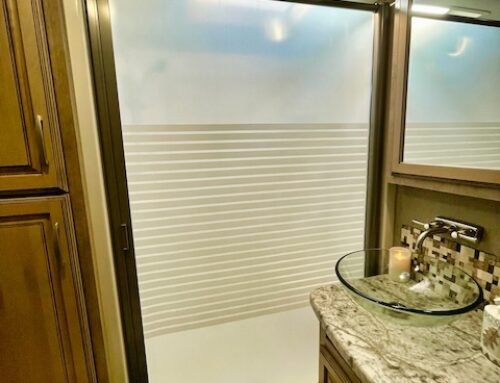
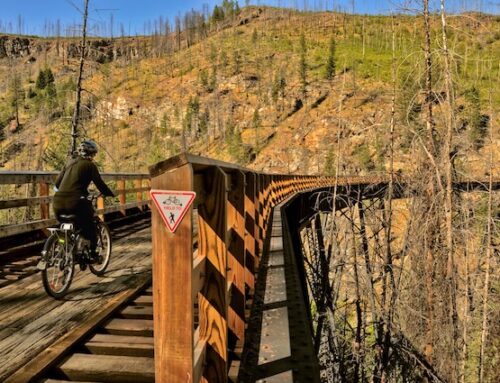
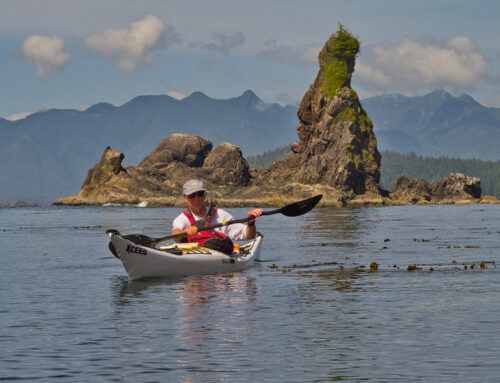
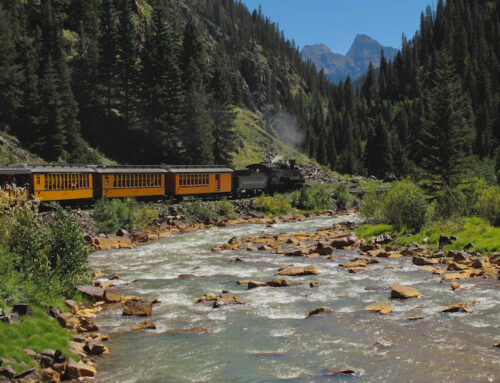
Hi,
I really like your blog post–always fun to read more about the lodges and find out about people’s experiences. Mark Kelly and I are working on a book about the vanishing Alaska Highway lodge community–it will be published by Harbour Publishing in spring 2017. You can follow us on Facebook Frost Heaves and Coffee Beans, or Twitter @frostandcoffee
Sounds like a great project! I look forward to reading more!
I would love to go on a trip – the Alaska Highway! This has been one of my dreams!!
Oh … do it! It’s so worth it. It’s an adventure you’ll never forget … but be warned … you may like it so much you’ll want to do it over and over again!
In the spring of 1958 I was an 18 year old member of the Canadian Provost Corps (Military Police) posted to Dawson Creek Provost Detachment. . My task was to issue over width and length permits and conduct mobile patrols to Fort Saint John. The Peace River had collapsed and a temporary roadway was carved out along the riverside . This roadway interested with Pacific Great Western railway treacle. A hight wooden curved structure with a deck width of 11ft 3 in. Commissionars operated a oneway traffic defile with the train of course having right of way to get us all safely across the Peace. I will never forget my first experience with gumbo in Dawson Creak. Great experience and great people. Greg Stevens.
Hi Greg. It was really interesting to read about your work with the Provost Corp in Dawson Creek! Thanks so much for sharing that! Bruce & Linda
we made a quick trip to US border past Beaver creek YUKON from Whitecourt,Alberta.. stayed overnight at Bettys motel to get a break from our 8 ft trailer..did a tour of Beaver creek..my wife was born in Whitehorse and lived in Beavercreek till 63. Beet showed rhe wife the big empty hotel he has beside his gas stattion ,the old Border crossing building that used to be across the road from present location. we then went to Atlin Lake overnight before heading south for Home.. hope to do the trip with more time next yr..with our 16 ft trailer…lol
Hi Ken, very interesting to here about your adventures to Beaver Creek and Atlin and that your wife lived in Beaver Creek! Thanks so much for commenting!! Bruce
In summer of 1980, answered an ad in a Vancouver newspaper to drive and deliver a brand new, red pickup to Whitehorse for Territorial Gold Placers. Met a guy downtown..he handed over the keys, cash for gas and a copy of The Milepost. Stopped at Trapper Ray’s and Liard Hot Springs. While walking on a narrow boardwalk out to the pools that were still wild then..no chrome ladders and cement…a biker who had ridden his Harley inland, was rattling along on his way back to the parking lot. That’s when the Kopper King was hopping with the great band ‘ Goin’ South ‘..people were happily squatting in the bush in wall tents with hippy killer stoves….hitched a plane ride at the airport with Beet to Beaver Creek …
A great story and what an adventure! That was definitely a different time for traveling to those spots. Thanks for sharing!!